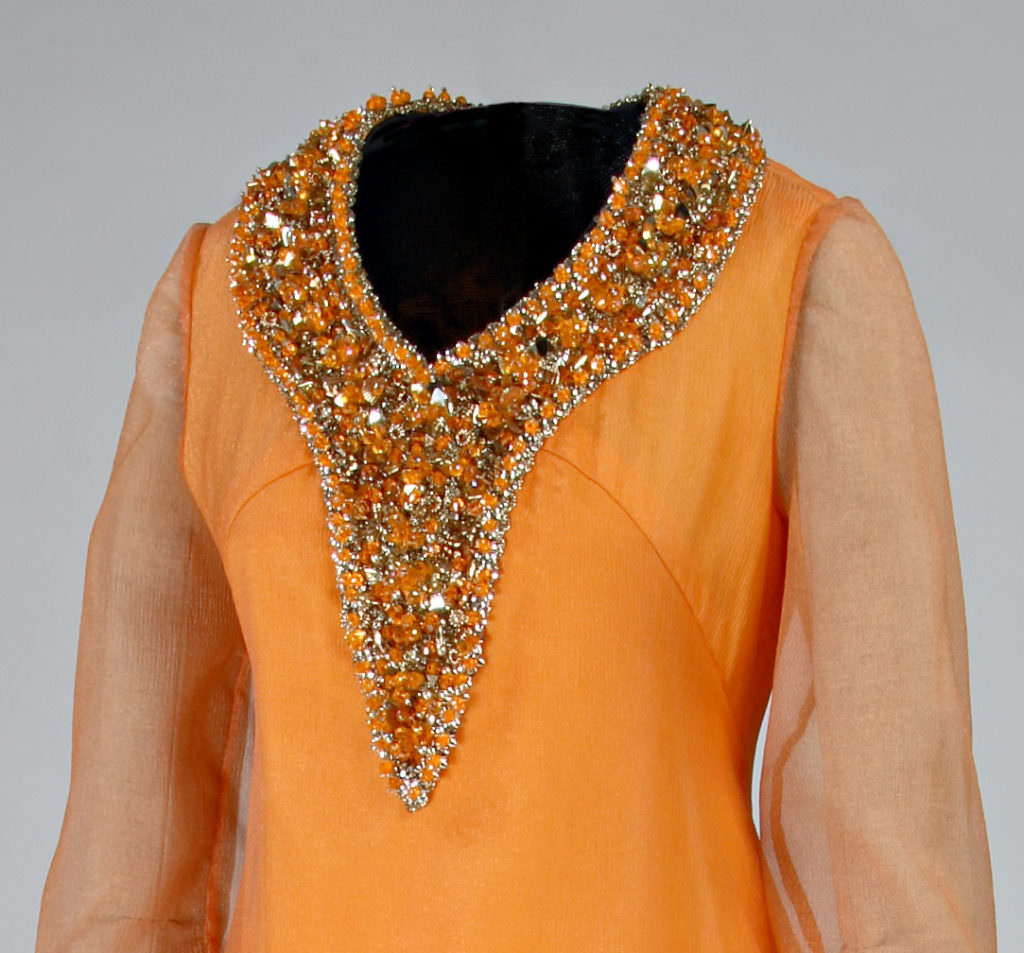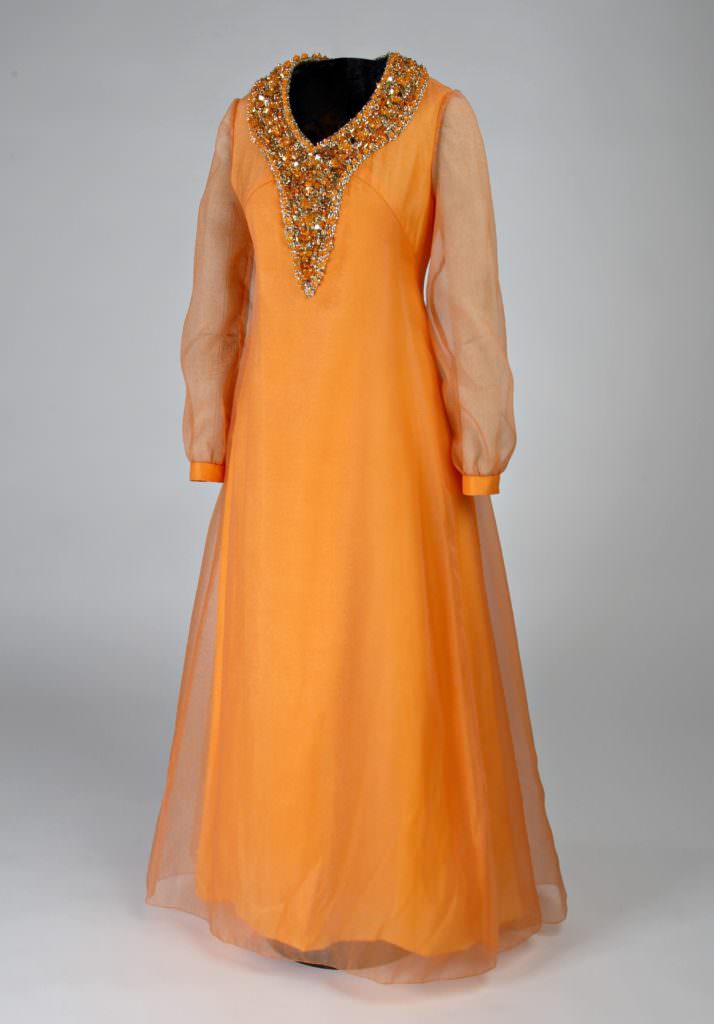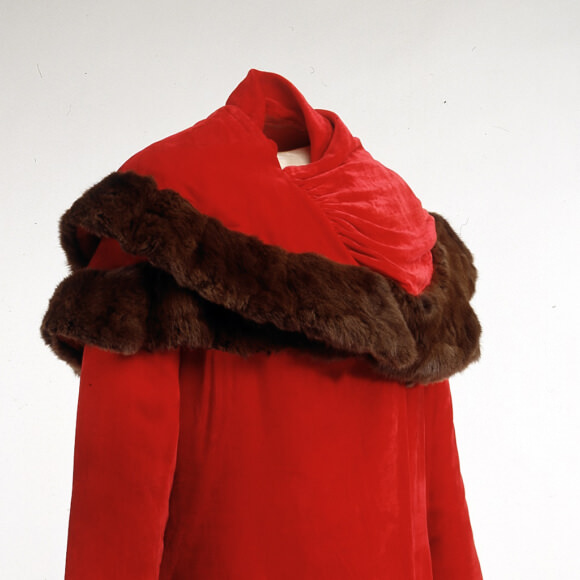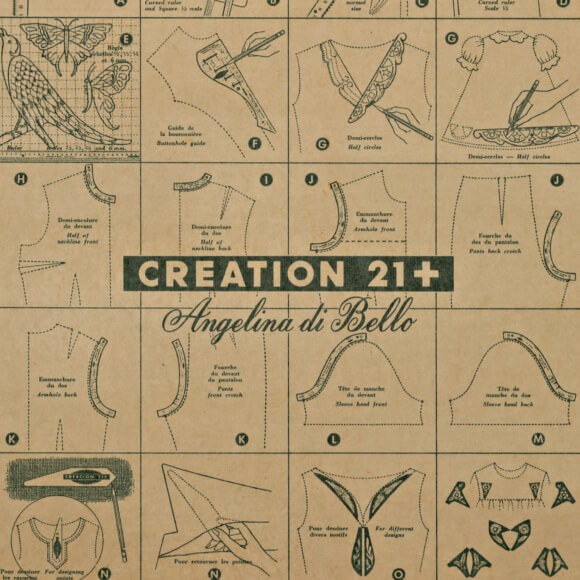
Dress, John Albert Kelly, about 1960-1970. Gift of Louis-Philippe Bertrand, M2002.91.1.1 © McCord Museum
John A. Kelly enjoyed a brilliant career for just over a decade. In the late 1950s, after three years of studying haute couture at the École des métiers commerciaux de Montréal, he returned home to Quebec City and opened his salon on the corner of Ste. Marie and Richelieu streets where he immediately began working on his first fashion show. Struck by polio, he attended the presentation of his creations in a wheelchair. He managed to completely overcome his illness and retained no trace of its effects. This will to prevail gradually proved to be a common thread in his career and life.
Although the couturier’s debut was very well received by critics, he decided to pursue his training in Europe. The École de la Chambre Syndicale de la Couture Parisienne awarded him a first prize for creativity. The École Guerre-Lavigne, which he had chosen as being the best school for pattern-making, awarded him a diploma with distinction. The École de la Chapellerie de Paris imbued John A. Kelly with a veritable passion that spurred him to excellence. He also attended the École du Louvre where he learned about fashion and design history of clothing and styles. Finally, at the highly renowned Ealing Technical College in London, he learned to become a master tailor in the finest British tradition. While he was in England, he also attended a specialized institute that helped him permanently overcome an embarrassing stutter.
In 1962, the man who moved into 996 de Salaberry Street in Quebec City had a wealth of expertise and style waiting to be expressed. His door had an engraved plaque that read: “Création John A. Kelly. Spécialité robe de mariée. Haute couture.” (John A. Kelly Design. Specialty wedding gowns. Haute couture.)
The building housed his salon, workshop, and the John A. Kelly fashion school where he offered classes in couture (cutting, draping, dressmaking) and “charm”:
John A. Kelly instinctively knew that manners, conduct and posture all contribute to self-presentation, and that poise and style make custom-designed clothing look its best.
The fashion shows at his salon, presented in a sumptuous Victorian decor, attracted a select clientele. Members of high society, from Montreal to Percé, all boasted of receiving expert advice from John A. Kelly and, above all, wearing his label. He was soon inviting comparisons to the great masters of Parisian haute couture. He became the couturier of political wives and their entourages. In the 1960s, a large reception was held whenever the National Assembly opened a new session. On these occasions, the Premier’s wife, whether Johnson, Bertrand or Lesage, proudly wore an evening gown created by John A. Kelly. His label not only promised a high-quality gown or harmonious, balanced outfit that was always in good taste, it also offered a blend of contrasting details that created an elegant, refined whole.
More specifically, John A. Kelly’s talent was to create custom garments that truly reflected the client, where her own image was the source of the inspiration.
The couturier effected this personalization in the choice of fabric, colour, texture or print. Depending on the circumstances, he would also suggest a hairstyle, make-up, and accessories like stockings, shoes, handbags, and jewellery.

Dress, John Albert Kelly, about 1960-1970. Gift of Louis-Philippe Bertrand, M2002.91.1.1 © McCord Museum
As did the major French fashion houses, John A. Kelly used the draping technique to create a toile; the garment was cut from muslin and fitted on a dummy with the client’s measurements. Any necessary adjustments were made at the client’s first fitting and then the garment was cut out of the fashion fabric. The piece was basted and partially assembled. A second fitting allowed adjustments before the final fitting. At that point, a few more details could be modified to create the perfect fit. Two seamstresses created the garments in the workshop under the direction of John A. Kelly. In 1969, the couturier hired Jean-Claude Béland, who worked as his assistant and took charge of pattern-making and teaching.
John A. Kelly’s salon had a dedicated clientèle. Regular customers’ measurements were kept on file. Their extensive wardrobe needs were typical of a time where up to six different outfits could be required in a day. Early afternoon ensembles differed from those for morning or late afternoon events; then there were were cocktail dresses, dinner dresses, and evening gowns. John A. Kelly observed these rules and conventions and came up with an appropriate garment for every occasion. For Kelly, a classic cut in a bold print struck the perfect balance for the beginning of the day. For the afternoon and travelling, he preferred smooth textured wools and an unusual cut as subtle enhancements to a client’s personal style. For the evening, he proposed his most elaborate creations, nonetheless always in good taste.
Furthermore, the fashion of the era did not offer a wide variety of styles or shapes. The early 1960s were characterized by a silhouette with few variations. The couturier expressed his creativity by focussing on simplicity in his sensitive and personal vision of women and their appearance.
For John A. Kelly, a plain style did not have to be boring or nondescript; a discreet unusual touch could make it original.
His garments were sleek, classic, and always stylish. Garments with Kelly’s label stood out for their fabrics, perfection of cut, impeccable drape and quality construction. His characteristic simple silhouettes and refined elegance were authenticated by the couturier’s own signature, embroidered in green thread on a silver cloth label sewn onto the back of every piece or, in the case of coats, in the right side seam. Though John A. Kelly’s creations may have been understated, they were nonetheless remarkably creative, thanks to the blend of colour, innovative details in the cut, an arrangement of darts that gave movement to the garment, along with the occasional touch of boldness and fantasy. Fabulous, eccentric, at times enormous hats added a cheerful touch and contributed to the label’s renown.
With the end of the 1960s, Quebec society was caught up in a wave of modernization and changing customs. Parliamentary traditions changed as well and receptions to mark the opening of sessions were discontinued. Designer ready-to-wear clothing was changing the market and John A. Kelly was not suited to work in industry. With his artistic temperament he had no interest in mass production. His passion was to create unique garments as works of art. On September 16, 1971, fate put an abrupt end to the career of John A. Kelly, when he was murdered in his home on Bernière Street in Quebec City. He is remembered as a passionate man in love with his craft who was extraordinarily sensitive to harmony and beauty. He has left an indelible mark on the history of Quebec fashion.
Publication date
01/10/2004
Writing
Valérie Laforge, Dicomode
Share
DownloadRecommended entries
© MCCORD STEWART MUSEUM 2025






